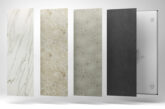
Delving deeper into the facts that define Lot 20, Rointe’s Santiago Villaescusa answers the key questions that installers are asking.
Which products are governed by the Lot 20 regulation?
All space heating products for domestic use with a calorific value of less than or equal to 50kW, which are manufactured and put on sale after 1st January 2018, must comply.
This means that the regulation applies to all space heating products that use liquid or gaseous fuels, such as boilers, accumulators, radiant panels, ceramic radiators, infra-red heating products, next generation fluid heaters, etc.
Why are regulations that classify these types of products necessary?
In the heating industry many brands will attribute performance standards to their products, however in the absence of stringent legislation, such claims lack the integrity assured by clearly defined legal regulatory standards.
The performance standards of obsolete, often problematic boiler systems with out-dated piping standards and combustion technology are likely to be called into question by the new regulations.
An alternative solution is modern electric heating systems, which are gaining more recognition, in part due to the improvements in building insulation, as well as the additional efficiency and technological advantages they offer compared to traditional boiler systems.
Notwithstanding this, in the heating industry, not all products have the same level of performance nor are they manufactured to the same efficiency and eco-friendly design criteria.
Therefore, these new requirements aim to regulate an industry where previously information may have been blurred, confusing or at least hidden under layers of legalistic language and governmental bureaucracy. Going forward the eco-friendly design of heating products and their efficiencies will be graded by one common clear regulatory standard across Europe.
How do you define a ‘next generation’ space heater?
A next generation space heater consists of aluminium elements housing thermal fluid, which is electrically heated and, in turn, is controlled by a unit that optimises the energy consumption throughout the whole system.
Aluminium has a thermal conductivity of 209 W/m*K, which provides the best thermal conductivity/price relationship of all metals. This high thermal conductivity and a design based on flaps favours the internal air circulation, thus providing optimal heat transfer to the heated space.
The thermal fluid used in the heaters is a high heat transfer mineral oil. Its high thermal stability eliminates corrosion risk, provoking stability of the viscosity and the capacity to transmit heat.
 The electric resistance of 110W per element is key to achieving the most efficient and gradual transformation of electric energy into heat which, in turn, allows the product to maintain stable temperatures, without temperature variations that are detrimental to human health.
The electric resistance of 110W per element is key to achieving the most efficient and gradual transformation of electric energy into heat which, in turn, allows the product to maintain stable temperatures, without temperature variations that are detrimental to human health.
The determining factor, which enables all of the aforementioned elements to work in harmony, is an advanced electronic control system that has been specifically designed to respond to ambient temperature fluctuations in the most efficient manner possible.
The key attribute to these products is their correct sizing and installation, which is of fundamental importance prior to use.
Access to a wide and versatile range of products, facilitates proper sizing and installation which, if carried out by authorised and trained professionals, ensures optimum product performance and efficiency.
What determines if a new generation space heater achieves a higher classification in the Lot 20 regulations?
Lot 20 regulations (2015/1188) require heating products to reach a minimum value known as ‘seasonal energy efficiency ratio’. This value is obtained from an initial value defined in the regulations and by either adding or subtracting by a value that’s determined by a series of factors that increase or decrease, based on the product performance.
All electric heaters start with the same initial value of 30%. This is a benchmark from which high efficiency, eco friendly designed products can be distinguished from their inferior performing competitors, according to the scores obtained under the product performance factors.
The minimum seasonal energy efficiency ratio value that an electric heating system must reach is 38%.
The first factor is based on the type of temperature control that the product employs. Products with a simple control or without control receive a value of 0%. Products with an interior temperature control and weekly timer, such as Rointe’s next generation heaters, get a value increase of 7%.
The second factor is based on the benefits derived from special functions that specifically improve energy efficiency. Rointe next generation heaters incorporate interior temperature control software with open window detection. They also include a remote control and an adaptable start-up control, all of which adds a further 3% to the initial 30% value that all electric heaters have.
The third and final factor that affects the seasonal energy efficiency ratio is the product energy consumption while on standby mode. Rointe next generation heaters have a standby consumption below the required limit, thus complying with the regulations and improving the product’s efficiency.
In summary in accordance with aforementioned data, Rointe next generation heaters would obtain a seasonal energy efficiency ratio value of 40% – well above the minimum required by Lot 20 regulations.
When choosing a heating system for this winter, the customer shouldn’t make the mistake of purchasing an initially low-cost product that ultimately doesn’t comply with the legislation that will come into force next year.
Rointe next generation heaters are an incredibly efficient solution for heating our homes, significantly exceeding the minimum required regulatory standards and providing the user with a quality product with no unexpected heat consumption surprises at the end of the month.








